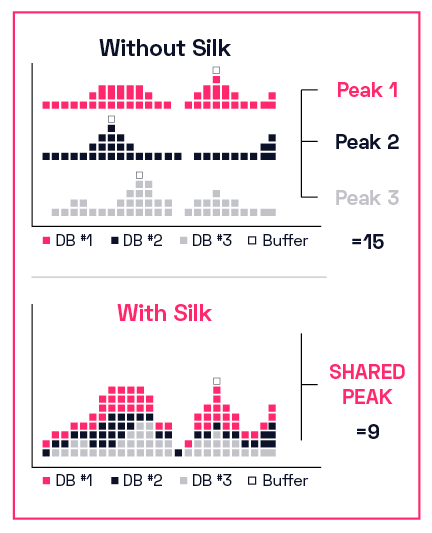Moving to the cloud has many benefits. This includes the ability to reduce costs since you are outsourcing the set-up, maintenance, and management of your infrastructure to the cloud provider. Offloading this cost can result in dramatic savings, however the cloud comes with its own unexpected costs. In this post, we’ll look at a few ways that you are wasting money in the cloud.
#1: Separate Provisioning of Workloads
Typically cloud storage can only support one workload. Meaning that if you have multiple workloads on the cloud, you’ll need to provision resources for them separately to achieve peak performance for each workload. On top of that, you’ll need to overprovision resources in case of rapid growth needs (we’ll tackle overprovisioning later).

#2: Lack of Enterprise Data Services
For organizations that have come from on-prem, you might notice that there is something missing in your cloud infrastructure: enterprise data services. These services – deduplication, zero-detection compression, and snapshots – are table stakes in on-premises infrastructure as they optimize data to only take up the minimum amount of storage needed. However, once you’ve migrated your applications, you’ll find that the cloud providers store data in its original shape with very little or nonexistent data reduction.
#3: Rightsizing VMs and Database Licensing Costs
Cloud datacenters are built with two networks: a fast Compute Network that connects Virtual Machines (VMs) to each other. And a much slower Storage Network connecting the VMs to storage. It’s this slower Storage Network that the cloud providers have their storage customers connect to. This is especially problematic for customers who are using the cloud for this mission-critical databases and applications that need ultra-fast performance. To get that faster performance, the customers need to increase the number of vCPUs in their database host VM. Yet this increases compute costs. On top of that, since database licenses are charged by vCPU, larger database VMs result in overprovisioning on database licenses – a double whammy of unnecessary costs.
#4: Inflexible Scalability
Scalability is important. For example, retailers see their biggest surge of traffic during the busy holiday season. To meet the extra demand, retailers need to be able to scale up their cloud resources to meet the increased performance demand… and then scale back down when those higher demand periods are over. Alternatively, companies that are expecting rapid growth need the flexibility to meet rapidly increasing demand as they continue to grow over time. Yet despite this nearly universal need for ease of scalability, the cloud providers make it a bit difficult to scale on demand. And because they provide storage and performance in a fixed ratio, if you need faster performance, you’ll need to pay for additional storage you don’t need.
#5: Copies of Data
Production. Dev/Test. Analytics. Sometimes you’re going to need to take multiple copies of data. But storing these copies can seriously eat into your existing cloud resources. This is where snapshots would typically come into play – at least for on-premises infrastructure. But just like other enterprise data services, the cloud providers have limited capabilities to snapshot data. Instead, cloud customers need to take full copies and deploy them from cold storage. These cloud snapshots are not thin provisioned, and they have very limited performance. All of which adds up to increased – and unnecessary – costs.
Now that you are armed with all the ways that your cloud spend is being bloated, how can you protect yourself against it?
That’s where Silk comes in! The Silk Cloud Virtualization Platform helps you get the ultra-fast performance that mission-critical applications need on the cloud while keeping cloud spend to a minimum. The platform does this by connecting users through the faster cloud Compute Network and through its two-tier virtualization that gives users the exact performance they need without costly overprovisioning. Silk offers a full suite of enterprise data services – including instantaneous zero-footprint snapshots – to help minimize cloud space usage. In fact, Silk customers typically see up to 5.5:1 data reduction!
Feel Like Your Cloud Bill Is Getting Out of Control?
See how Silk can help you reduce unnecessary cloud spend!
Learn more


